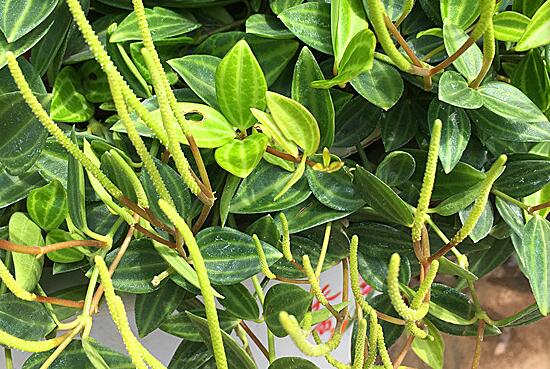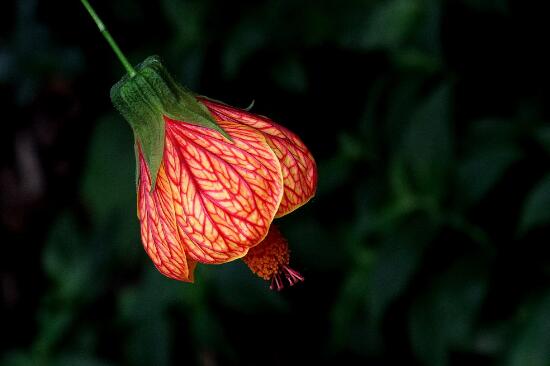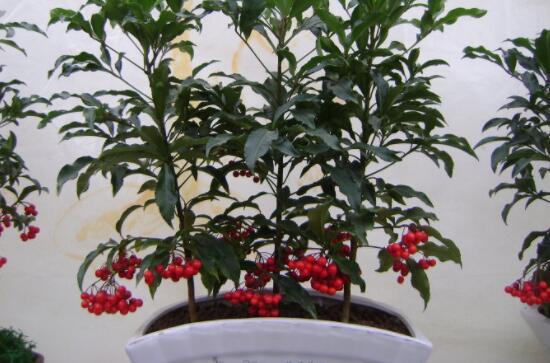Will the diamond jadeite plant blossom? how to raise / pull out the scape after the emerald diamond blossoms
For diamond jadeite, many flower friends should know that it is also called white pepper grass, named because its leaves are as green as emerald and as white as diamonds, and it is a beautiful foliage plant. And we know that all plants will blossom, will the diamond emerald plant blossom? If it blossoms, how to raise the emerald diamond after it blossoms? Today, the editor is here to solve this problem for everyone.
Will the diamond emerald plant blossom? yes

Diamond jadeite is a beautiful foliage plant, its plant type is small, the leaf color converges the white of diamond and the green of emerald, this white and green scenery is really beautiful! As for diamond emerald plants, will they blossom? In this regard, we should not doubt, because plants will blossom, but the degree of difficulty is different! And diamond emerald is the kind of plant that is not easy to blossom.
Second, the diamond emerald blossoms in May.
Although the flower of diamond jadeite is rare, it will blossom in May after 2-3 years. However, the flower shape of diamond emerald is not a flower, but a small stick sticking out from the middle of the leaf, like a small tail, does not look good.
Third, how to raise jadeite diamonds after blooming
1. Set aside for viewing
When the diamond emerald blossoms, if you want to see its flowers, you don't have to deal with it. However, it needs a lot of nutrition to bloom, so in order to have no problems with the growth of diamond jade, we should properly water and fertilize:
① fertilization: Diamond jadeite consumes a lot of nutrients when it blossoms, so after it blossoms, in addition to pruning residual flowers and branches, it is best to give fertilizer properly, so that its leaves can remain full and do not affect plant growth.
② watering: Diamond jadeite likes a humid environment. After it blossoms, we should replenish it with water: observe its growth regularly and water it in time to avoid growth stagnation caused by drying of the basin soil.
2. Pull out the scape
How to raise emerald diamonds after blooming? If you show its ugliness, you can cut it off inside: pull the scape from the base so as not to consume too much nutrients. When pulling out the scape, use the hand to shake it out, so as to prevent the residual pedicel from remaining between the leaves and adversely affect the growth of new leaves in the future.
IV. A collection of pictures of diamond jadeite blossoms
Yulu, the green emerald of succulent plants, is a "soft-leaf" variety of succulent plants of the genus Aloe and Reed, also known as succulent plants. Originally from South Africa, it can be cultivated in many places in the world. Yulu plant is exquisite and small, rich in species, leaf color glittering and translucent, rich in variety, like handicrafts in life, very lovely, is one of the popular small succulent plant varieties in recent years. Chinese name Yulu Haworthia cooperi perennial succulent herb, the plant is solitary at first, and then gradually shows the shape of community. The fleshy leaves are arranged in a compact rosette, the leaves are thick and plump, emerald green, and the upper half is transparent or translucent, called "window", with dark linear veins. Under the condition of sufficient sunlight, the vein is brown, and there is a small "beard" at the top of the leaf. Racemes loose, florets white. Yulu likes cool semi-shade environment, mainly in spring and autumn, resistant to drought, not cold, avoid high temperature and humidity and hot sun exposure, afraid of shade, afraid of moisture, but also afraid of soil stagnant water. Reproduction can be carried out in combination with changing pots, or the young plants next to the mother plant can be dug up in the growing season, with or without roots can survive, rootless seedlings can be planted directly, rootless seedlings should be hung for 1 or 2 days, and then planted after the wound is dry, the newly planted plants should not be watered too much, so as not to cause rot, and normal management should be carried out after growing new roots. Second, cuttage Yulu grows buds in the leaf axils of the lower part of the plant. for the species that are not easy to produce buds, the growing point in the center of the plant can be destroyed to promote its germination. After the small buds grow to 2-3 cm, they are removed and hung for 2-3 days. After the wound is dry, cuttings are carried out in the culture soil. After cutting, the soil is semi-dry, and new roots can grow after 2-3 weeks. Third, leaf cuttings can choose strong and fleshy leaves, and during the growing period, they can be cut in substrates with good drainage such as vermiculite or coarse sand, and keep the basin soil slightly moist after cutting. the base of fleshy leaves is easy to take root and grow small buds, which can be planted separately when the buds are slightly larger. Fourth, only by artificial pollination can the jade dew bear seeds. Generally choose the sunny morning when blooming, the method is to select two Yulu plants that bloom at the same time, or pollinate varieties such as Shou and Vientiane, which are also 12-volume genera. Parents require compact plant type, thick and full leaves, high transparency of the "window", remove the petals during pollination, remove the pollen and apply it to the stigma of another flower. The pollen can also be removed in the afternoon the day before and carefully preserved. Pollination will be carried out the next morning, with a higher success rate. Wait for the plant to seed and mature before sowing. Some variant plants may appear in the sowing seedlings, and young plants with compact plant size, fleshy leaves, high transparency of the "window" and prominent veins can be selected as seedlings, and if seedlings with different leaf colors are found, they should also be preserved. it may be a precious variegated plant. The reproduction of Yulu can be combined with changing pots for ramets, or the young plants next to the mother plant can be dug up in the growing season, both with and without roots can survive, direct planting with roots, rootless seedlings should be hung for 1 to 2 days, and then planted after the wound is dry, the newly planted plants should not be watered too much, so as not to cause rot, and then carry out normal management after growing new roots. You can also choose strong and fleshy leaves in the growing season to keep the potted soil slightly moist, it is easy to take root at the base, and grow small buds, and so on the buds are slightly larger and then planted separately. Sowing is also one of the breeding methods of Yulu, but through artificial pollination. The seeds can be sown with picking, and the sowing soil can be mixed with 3 parts of vermiculite, rotten leaf soil or peat soil. It is best to disinfect the soil at high temperature before sowing to eliminate the bacteria and eggs. Cover with a piece of glass after sowing and emerge in about 20 days. Remove the glass after emergence, pay attention to ventilation, do not make the soil too dry, when the seedlings are too crowded, pay attention to seedling transplanting. In the sowing seedlings, there may be some variant plants, among which the young plants with compact plant shape, fleshy leaves, high transparency of the "window" and prominent veins can be selected as seedlings for preservation. If young seedlings with different leaf colors are found, they should also be selected, which may be a precious variegated plant when they grow up. Yulujin, which is worth twice as much. For the management and maintenance of Yulu. Growth period should be given sufficient light, if too shaded, it will cause loose plant shape, not compact, long and thin leaves, poor transparency of the "window". If the light is too strong, the leaves will grow poorly, showing a light reddish brown, and sometimes the strong direct sunlight will burn the leaves, leaving ugly stains. The plants growing in the semi-shade will have plump and transparent leaves. During the growing period, water should be watered thoroughly to avoid stagnant water, let alone rain, especially long-term rain, all in order to avoid rotting roots. However, it is not suitable for long-term drought, otherwise the plant will not die, but the leaves are withered, the leaf color is dark, and lack of vitality. Yulu likes to have a certain air humidity environment, air dry can often spray water to the plant and the surrounding environment to increase air humidity, in the growing season can also be cut off the upper part of the transparent colorless beverage bottle to cover the plant maintenance, so that it grows in a humid environment, so that the leaves can be full, the transparency of the "window" is also higher. But the scape must be removed in the summer high temperature season, so as not to use scissors to avoid boredom, but to shake it out with your hands, so as to avoid residual pedicels between leaves and leaves, which will adversely affect the growth of new leaves in the future. Yulu is rich in species, its leaves are glittering and translucent, and its bright windows are like living handicrafts. It is a succulent plant star that everyone loves to see flowers bloom. Here are one by one examples of the frequent appearance of the members of the Yulu family. Purple muscle jade dew is divided into two kinds: large purple and small purple, the size is about the same as Ji Yulu, the basic color is purple, after the sun will be purple to black, not easy to grow. Big window Yulu belongs to the hybrid variety of Yulu: the window thief is big, how big is the coin of 1 yuan. Because the larger window, the plants will be more scattered. The extent of overgrowth is small in the case of lack of light. With top hair, the window is still more beautiful.
The window surface of cicada jade is small and as thin as cicada wings. The lines are crisp and clean, so it is easier to live in groups. The degree of overgrowth is relatively small.
Ji Yulu can be divided into large species and small species. This is also one of the more common varieties.
Green jade dew is divided into 2 large and small, and the large green jade dew is provided here.
Yulu is highly ornamental and is often used as an ornamental plant at home or office. The leaves are glittering and translucent, as if carved, strange and beautiful, fresh and elegant, like living handicrafts, very distinctive. Suitable for planting in small pots, displayed in windowsill, desk, desk, balcony, etc., and watch its unique plant type and leaves in your spare time, so as to understand the magic of nature and the beauty of plants. Putting plants can not only beautify the environment, but also purify the air. In fact, the display of flowers and plants also has something to do with fengshui, the right plants, is also of great help to their own luck. Yulu is a rich plant of chicken people in the zodiac: people who belong to chickens in the zodiac have a lot of money, but they don't know how to keep their money, and their money is either borrowed or lost on investment, and there is a great chance of losing money. If you want to keep your money, you can put jade dew in the living room, which can help you block the god of wealth, and the money will naturally be able to keep it. So the jade dew is naturally comparable to the emerald.
Although Cao Yulu is not a precious species, its charm can not be underestimated. Yi Qunsheng. The degree of futility is less.
Ice lantern jade dew is the preferred variety selected after the hybrid of good jade dew, the window surface is larger than ordinary jade dew, the grain is more clear and concise, the surrounding large window surface has no top hair, and the plant type is larger than ordinary jade dew and smaller than emperor jade dew. Its fleshy leaves are crystal clear and bright, and get its name as clear and transparent as ice lantern. Ice lantern jade dew has a large plant type, with a diameter of 7 to 10 centimeters, and hardly produce lateral buds and grow fewer plants in groups. The top of its fleshy leaves is very transparent, as transparent as ice.
- Prev

What to do when the lantern flower grows insects? disease and pest control of lantern flower / 3 insects and 2 diseases sprayed with medicine
As a common beautiful flower, lantern flower is very effective, it is like a lantern, it not only looks good, but also can treat kidney deficiency medicinally! Such plants are naturally lovable, but if they suffer from diseases and insect pests, the beauty of lantern flowers will never return. At that time, flower friends must be in a hurry! that
- Next

How to raise rich seeds, breeding methods and matters needing attention / like semi-overcast environment
Rich seed, flower friends should be no stranger, it is a kind of ornamental fruit plant, red fruit, with green leaves, looks very beautiful. In life, many people want to raise rich seeds, so how to raise rich seeds? The following are the breeding methods and matters needing attention of rich seeds carefully arranged by the editor, which are very detailed.
Related
- Fuxing push coffee new agricultural production and marketing class: lack of small-scale processing plants
- Jujube rice field leisure farm deep ploughing Yilan for five years to create a space for organic food and play
- Nongyu Farm-A trial of organic papaya for brave women with advanced technology
- Four points for attention in the prevention and control of diseases and insect pests of edible fungi
- How to add nutrient solution to Edible Fungi
- Is there any good way to control edible fungus mites?
- Open Inoculation Technology of Edible Fungi
- Is there any clever way to use fertilizer for edible fungus in winter?
- What agents are used to kill the pathogens of edible fungi in the mushroom shed?
- Rapid drying of Edible Fungi

